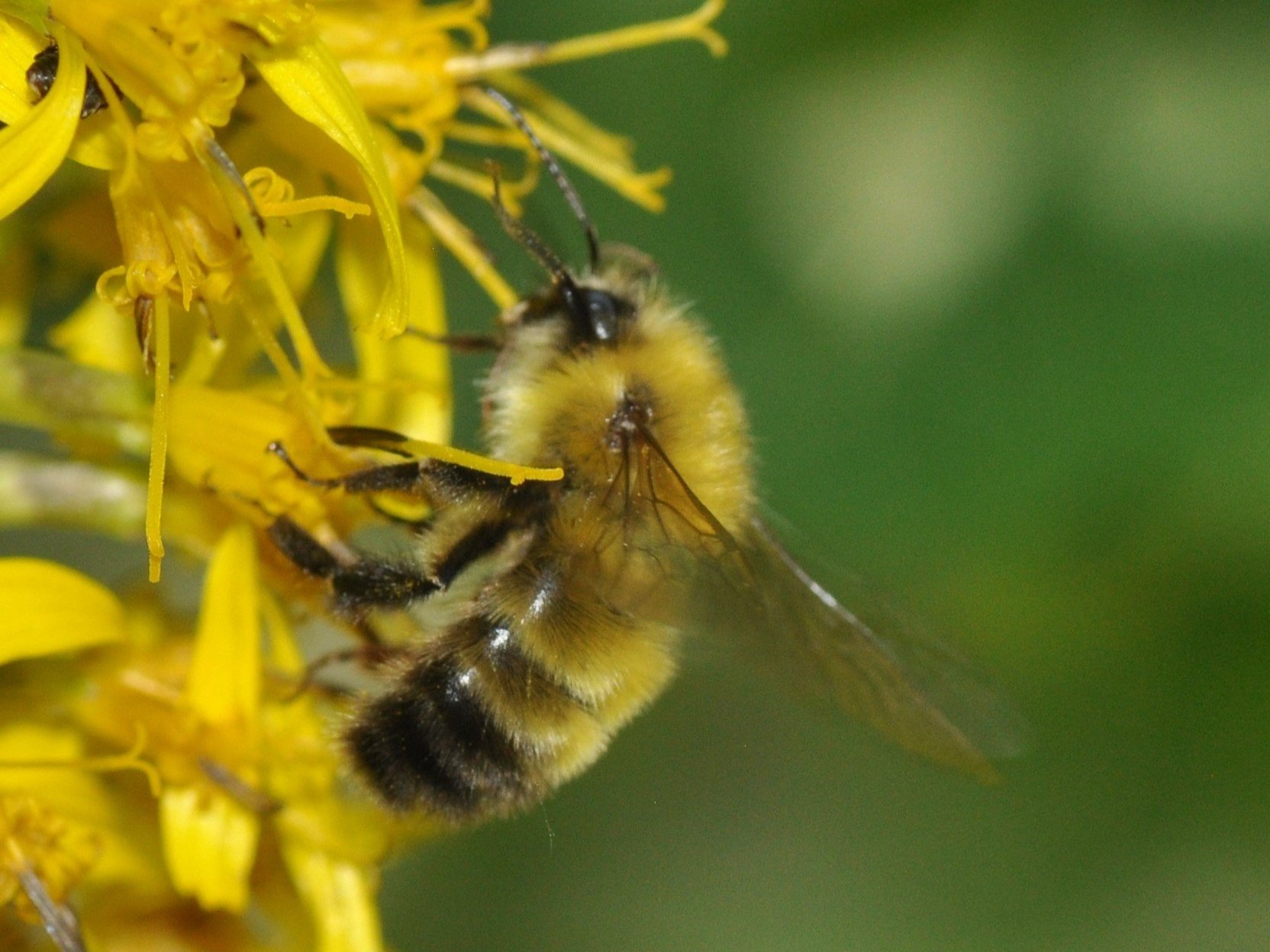Community Science at Rogers Center
The B-Team is the first Community Science Project at Rogers Center. Started in 2023, this initiative’s first goal is to document which of New York’s 450 species of native bees are present in Central New York. It is hoped that some species which are rare, in decline, or undocumented in the 21st century, may still be found.
Why are we doing this?
Over the past few years, you have likely heard the term “Save the Bees,” a movement started to draw attention to declining bee populations and emphasize the important role they play in the ecosystem as major pollinators.
Much of the attention is centered around honey bees, who do face some challenges, and which are vital to modern agriculture. However, honey bees are not native to North America - they are an introduced species.
The B-Team aims to bring attention to native bees, which are not only extremely important, but many species are also in serious decline. Native bees support local ecosystems by pollinating countless native plants, but also pollinate many crop plants, like blueberries, tomatoes and squashes.
Native bee populations have been in serious decline since the late 1990s. Several once-common bees, like the rusty-patched bumble bee (B. affinis), have disappeared from huge portions of their historic ranges.
Many people are unaware of the value of our native insects, and as an environmental education center, we want to change that.
Click Here to Download Data Collection Manuel
Bad Picture Good Picture
Click Here to Record Volunteer Hours
Joining the B-Team
Anyone interested in joining The B-Team can contact our volunteer coordinator, Mallory Brown, for more information. All you need is a digital camera or smartphone, and the iNaturalist app. downloaded to your phone and/or computer. Turn on the geolocation and upload your pictures of bees taken anywhere in our nine-county project area, and they will automatically be added to our project.
Bee Photography Tips
Photographing bees can be a tricky business, especially when trying to get images that are good enough for ID. Here are a few tips.
Cooler temps mean the bees will be flying more slowly.
For best chances of ID, get images of the bee’s face, side and back. Face shape, eye shape, coloration, wing venation, and leg structures all contribute to being able to identify species.
Make sure images are well lit and not blurry (no Loch Ness- or Sasquatch-quality photos).
No events are currently scheduled, but check again later!
Upcoming Events
The rusty-patched bumble bee, Bombus affinis, was once one of the most common bees of the northeastern United States. By 2000, it was discovered to have vanished from over 90% of its historic range, including NYS. There is still a hotbed of these bees in northern Illinois, where this photo was taken in our senior educator’s garden in 2019.
B-Team Background
In 2023, we established our project on iNaturalist and called it The B-Team: Central New York Native Bee Survey. Any photographs of bees that are uploaded to iNaturalist from the nine designated CNY counties (Cayuga, Chenango, Cortland, Herkimer, Madison, Oneida, Onondaga, Otsego and Thompkins) are automatically added to the project.
This initial effort is providing us with baseline data that hopefully will be used to verify species presence.
In the summer, we have a Fellow from Colgate’s Upstate Institute join our B-Team project. In 2023 Matt McGeary was our first fellow, and in 2024 Charlie Tourbaf joined us. Both these students helped collect data and build out the Community Science project.










